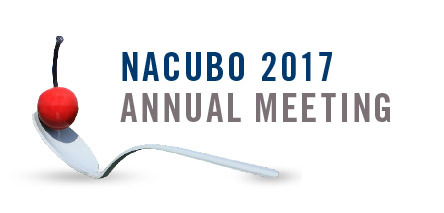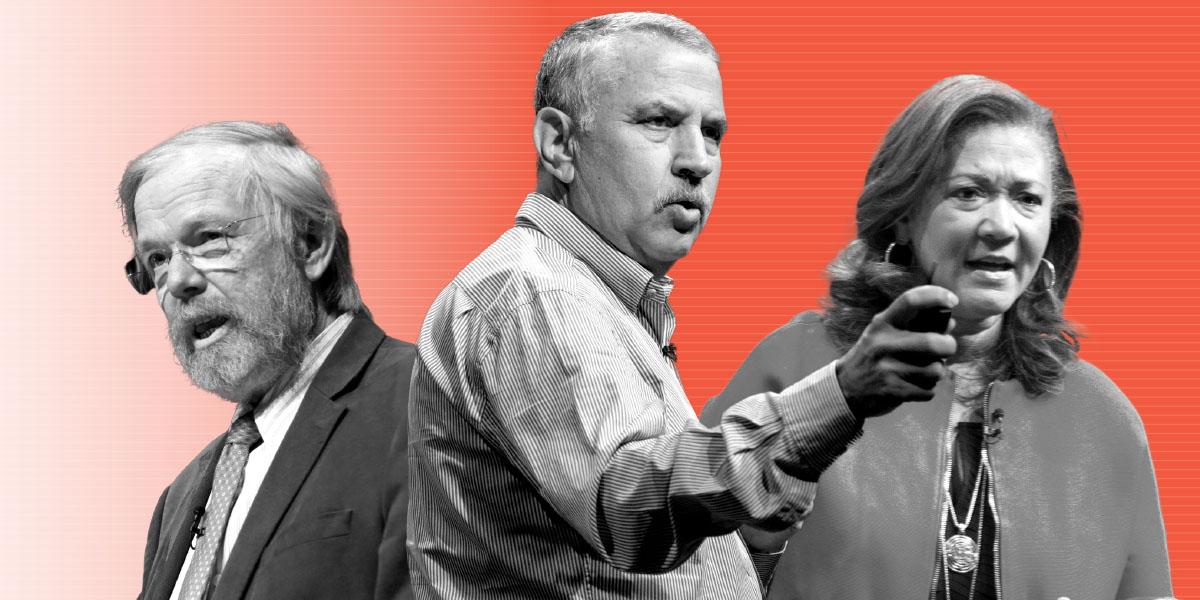
The following NACUBO staff members and consultants contributed photos, comments, and articles for this report: Kellee Edmonds, Sally Grans Korsh, Karla Hignite, Earla Jones, Elizabeth LaRocca, LaTosha McNeal, Ankur Ponda, Sandra Sabo, Carole Schweitzer, Khesia Taylor, Maryann Terrana, and Preeti Vasishtha.
Photos by Coppersmith Photography
Known as the “City of Waters” for the 13 lakes within the city’s limits, Minneapolis also boasts 5,000 acres of parks and a mix of comedic and cultural talent producing the likes of music legend Prince and former Saturday Night Live writer and performer, U.S. Sen. Al Franken. “And, if you enjoy Honey Crisp apples, you have the University of Minnesota to thank for the creation of that sweet and crunchy variety,” noted NACUBO President and CEO John Walda during his welcoming remarks to attendees of the 2017 annual meeting. The city’s reputation as an educational powerhouse is witnessed as well by the 39 colleges and universities spanning the greater Twin Cities area, including 10 community colleges with a combined enrollment of more than 75,000 students, added Walda.
With total registration of 2,579 attendees and exhibitors, the meeting rivaled that of Montreal last year, virtually tying that city for the fourth largest meeting in 10 years. Of the Minneapolis total, 2,554 individuals were full-conference registrants; 392 were attending their first NACUBO annual meeting; and 25 international attendees represented 13 countries.
Programming at the NACUBO 2017 Annual Meeting included three campus tours, 85 breakout sessions and roundtables, and 167 exhibitors providing solutions for a broad range of campus management needs. Ninety participants took part in the pre-meeting NACUBO community service project assisting with construction of an outdoor environmental learning center at the Washburn Elementary School, in partnership with HandsOn Twin Cities and the U.S. Green Building Council. Other preconferences included the New Business Officers (NBO) program, and the Future Business Officers (FBO) sessions.
NACUBO’s opening event at Mill City Museum—built into the ruins of what was once the world’s largest flour mill, along the banks of the historic Mississippi River waterfront—paid homage to the city’s past as the flour capital of the world. At their peak, the mills in the Minneapolis-St. Paul region accounted for about 15 percent of all flour production in the United States.
A busy year on many fronts. In his opening remarks, Walda reported that since NACUBO’s 2016 Annual Meeting in Montreal, the association has been hard at work on numerous priorities: “A year ago, we launched our inaugural NACUBO Fellows Program with 15 participants in a yearlong leadership development program for aspiring CBOs. That cohort graduates at this meeting, as we welcome a second class of 16 Fellows to start their journey here in Minneapolis.”
Among the array of conferences, events, and publications designed to help members stay on top of the latest updates and industry trends, Walda alerted attendees to an exciting value-added member benefit launched this past spring. A dedicated responsive website for Business Officer allows members to auto-format the magazine to their desired devices and to view all content online simultaneous with the print version release.
As for NACUBO’s advocacy role, Walda emphasized the great importance, now more than ever during the association’s 55-year history, to continue speaking out on issues of the day that affect higher education. “We have expanded our federal research team, and they are engaged on Capitol Hill in issues that impact the industry, including immigration, health care, tax reform, and regulatory and budget issues,” said Walda. But, the work of NACUBO is not possible or effective without the engagement of hundreds of volunteers, he said. “Your time, expertise, and perspective inform and shape all these efforts.” That is no more true of anyone than the chief volunteer of volunteers, suggested Walda, and this past year that office was filled by NACUBO Board Chair Randall Gentzler, vice president for finance and administration, treasurer, Loyola University of Maryland.
A stronger NACUBO moving forward. In taking the stage, Gentzler reminded attendees that they are part of something larger than their individual institutions. “We are a diverse and powerful network committed to serving our sector. I am grateful to have had the opportunity to collaborate with so many dedicated individuals over the course of the past year,” said Gentzler. He recounted his year as chair as one focused on helping to advance NACUBO’s new strategic blueprint, which lays out priorities to more directly engage with members and their institutions, drive effective solutions out into the field, strengthen the strategic leadership role of CBOs, strengthen advocacy efforts, and advance understanding of higher education business and finance—all the while tackling the pressing issues that come the sector’s way.
Another important initiative launched at this year’s meeting—The Value of Higher Education, which provides members with a suite of communication tools, including infographics, success stories, and fact sheets for use in addressing the media. (See NACUBO Notes on page 64 for more details and some examples of the infographics.)
“We have and will continue to leverage past successes to meet new challenges. As I stand ready to pass the gavel, I am reminded that the one defining characteristic of CBOs is their steadfast commitment to making a positive impact on our campuses so that when we leave, we leave things in a better place,” said Gentzler. “That is my goal—to leave NACUBO a little better. With a new blueprint for action and staff ready to put this in motion, I am more confident than ever of our future.”
SECTION I: INSIGHTFUL SPEAKERS
SECTION II: LEARNING LESSONS
SECTION III: CAMPUS TOUR
SECTION IV: SPECIAL EVENTS



